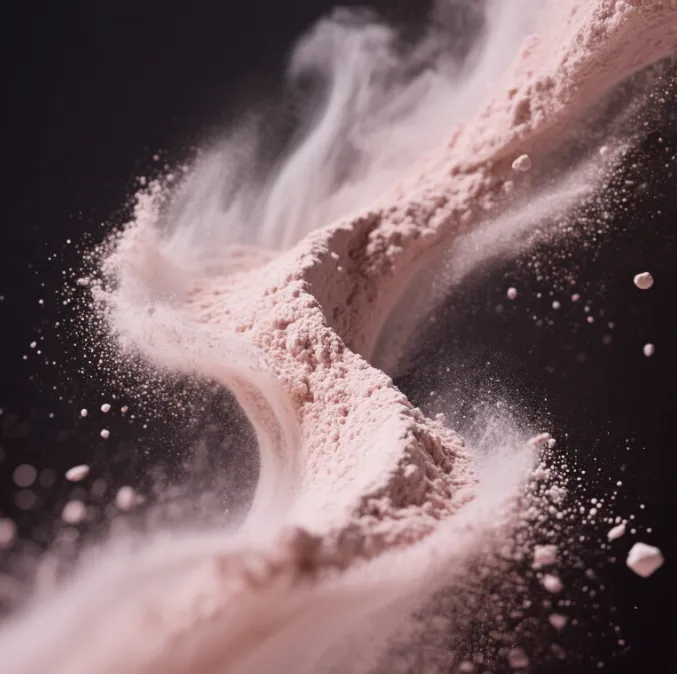Temperature changes significantly impact powder flowability in material processing. This nonlinear effect influences both production efficiency and final product quality. Let’s examine the science behind temperature control.

The Dual Effects of Temperature
Within optimal ranges, temperature improves powder flowability. For alumina ceramics at 1550°C sintering, liquid-phase additives rearrange grains. This reduces porosity to 1.2% while increasing fracture toughness by 60%.
Cross-linked polyethylene (XLPE) shows similar benefits. When grinding temperature rises from 30°C to 45°C, particle “tails” shrink into spherical shapes. Bulk density increases 17% from 0.35 to 0.41 g/cm³.
Nanoscale zirconia demonstrates this too. Calcination at 400-600°C grows particles from 25nm to 50nm. Tighter packing improves flow properties.
However, exceeding critical temperatures reverses these gains. TiO₂ transforms from anatase to rutile above 600°C. Particles coarsen to 290-960nm, reducing packing efficiency.
Polyethylene powders soften and agglomerate at high temperatures. This increases angle of repose by 20%. PTC powders show similar issues. Spray drying above 400°C drops bulk density from 1.2 to 0.9 g/cm³ due to particle expansion.
Material-Specific Temperature Windows
Each material has unique temperature responses. XLPE performs best at 45-55°C. Beyond 55°C, particles begin sticking together.
Nanoscale zirconia achieves 3.2 g/cm³ density at 400-600°C. Above 900°C, clustering reduces density.
Alumina-CAS ceramics reach >97% density at 1500-1550°C. At 1600°C, liquid phase evaporation increases porosity to 3.5%.
Underlying Mechanisms
Temperature alters particle morphology. Polyethylene particles deform as molecular chains move. This increases contact area at higher temperatures.
XLPE particles become smoother at 45°C. Surface roughness (Ra) decreases from 1.2μm to 0.8μm, reducing flow resistance.
Phase transitions also play a role. LZS glass-ceramics shift crystal structure at 725°C. Rod-like crystals decrease by 60%.
CeO₂ powders gain 15% flow index per 100°C increase. This comes from improved crystallization.
Process control matters too. Alumina benefits from two-step sintering. 1500°C nucleation followed by 1550°C growth prevents abnormal grain growth.
XLPE powders need staged processing. 45°C pre-grinding and 55°C final grinding balance shape and density.
Industrial Optimization Methods
Additives enhance temperature effects. 0.1-0.5% CaF₂ or CAS lowers alumina sintering temperature by 200°C. It also prevents high-temperature evaporation.
Adding 1% SiO₂ to TiO₂ controls rutile growth. This maintains mixed-phase stability.
Advanced monitoring helps too. Laser particle analyzers track size distribution in real-time. This allows dynamic spray drying adjustments.
TG-MS analysis monitors sintering emissions. It optimizes protective atmospheres.
Bio-inspired designs show promise. Alumina rods grown at 1550°C mimic seashell structures. They achieve 6.08 MPa·m¹/² fracture toughness.
Practical Recommendations
Temperature effects have clear thresholds. Gradient testing with microscopy identifies optimal ranges for each material.
Multiphysics simulations predict temperature distribution. They model particle behavior accurately.
Building a temperature-flowability database helps. It provides references for different applications.
Understanding these principles enables better process control. Temperature acts like a double-edged sword. Proper use enhances performance.
With state-of-the-art manufacturing facilities and a dedicated R&D team, we provide customized powder solutions for industries including ceramics, polymers, pharmaceuticals, and additive manufacturing. Our proprietary technologies in particle size control, surface modification, and thermal processing ensure superior product quality and reliability.
At Epic Powder, we combine scientific excellence with practical engineering to solve complex powder flow challenges. Our commitment to innovation and quality makes us the preferred partner for businesses seeking cutting-edge powder material solutions.
Company website: www.epicpowder.com | Email: [email protected]